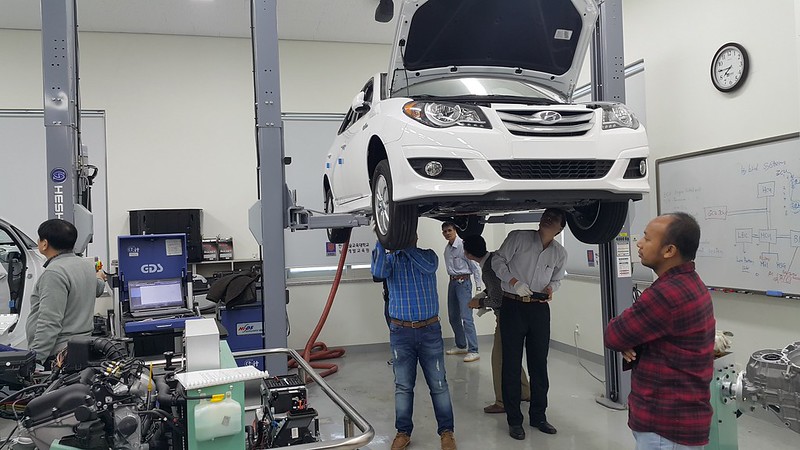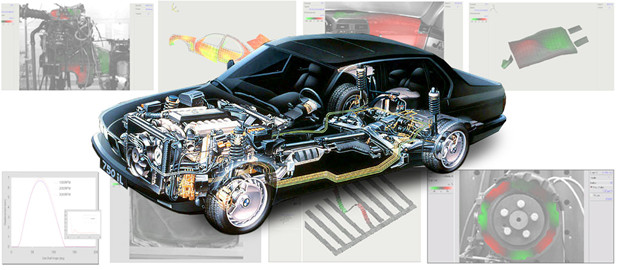
The world is shifting towards a complete technological era and science and technology have become key factors for the development of any entity. Without advancing scientific innovation, an entity will not develop and cannot be independent having self-esteem.
Moreover, these days people are more likely to understand only computers as technology and lack the knowledge that machines except computers are also technology. It is evident with developing technologies that the world is heading towards the automation of mechanisation. An automotive is based on the automation of machines in the sense that it propels itself.
While the fascination towards vehicles is visible in Nepal, the country is lagging far behind others, including its neighbours, in terms of automobile engineering. This contrast suggests a serious problem in the country’s academic and industrial sectors.
Automobile engineering in Nepal

Automobile engineering is a branch of engineering, which deals with designing, manufacturing and operating automobiles. However, there has been a misconception that automobile engineering is about mobile or cell phone development. Then, some might even define it by saying, the vehicles that have engines are concerned about automobile engineering but that will be a narrow definition, which might exclude electric automobiles.
Meanwhile, the reason for the slow development of the automobile industry might be a lack of enthusiasm and perseverance. In addition, the country’s system for registration and licensing does not encourage automobile enthusiasts to continue working on it.
Every year, at least 200,000 vehicles get registered in Nepal. Despite the increasing demand for automobiles, Nepal is unable to extract its advantage. Most of the bikes in the Nepali automobile industry lack standard certification as there is no standard set for an automobile in Nepal.
If we look at the European countries, they follow the EURO standard and India follows the British standard for certification. Meanwhile, most of the Enduro bikes that are sold in Nepal lack standard certification.
Even the safety formalities are not focused on. ECE, ASTM, ISI, and CSA are some standards that the world follows. The safety equipment cannot be sold if they do not meet one of those standards, differing with countries. Meanwhile, helmets available in Nepali markets are not even stronger than a cooking pot. This shows the ignorance of the Nepal government towards the automobile industry.
Unrecognised potential
Nonetheless, automobile engineering in Nepal seems to have one of the most feasible scopes. The demand for automobiles is proportionally increasing the scope of engineering. The government of Nepal can provide tariff discounts to encourage the automobile industry to manufacture the number of automobiles that can fulfil Nepal’s demand.
This eventually can lead towards providing relief to the trade deficit to some extent. Due to the backlash of such a suggestion by the government of Nepal, an industry named Hulas discontinued the production of automobiles. In response to criticism of these ideas, the Nepali government forced the Hulas industry to stop producing its products in accordance with the EURO II standard, which does not appear to apply to Enduro bikes that are being imported with hefty tariffs from China.
Looking at the current market, Hyundai, Toyota, Mahindra, Suzuki and Tata Motors are the dominating automobile companies in Nepal. The tax policy of Nepal refrained from the establishment of the Nepali industry.
Dirty politics and static tax policy have been the main reasons behind the domination of foreign industries despite being overpriced. As a result of lacking the automobile industry, it has become hard for a middle-class Nepali citizen to buy a four-wheeler or even a two-wheeler.
While one can get a motorbike for just Rs 100,000 in India, people need to pay more than double the converted price in Nepal even though there is only a miniature change in the price of raw materials. The target audience of foreign brands is exceedingly small.
So imagine how a person with a $1,381 income per year can afford a car that costs $30,000? If Nepal will be able to manufacture cars on its own, the price will not be the only change. The performance of the automotive would be customised according to the geography of Nepal.
Automobile engineering education
Meanwhile, automobile engineering has become the last or no option for those who want to study engineering in Nepal.
Only two constituent colleges of the Tribhuvan University Institute of Engineering (TU IoE) have an automobile engineering programme at the bachelor’s level. Despite having only 96 seats a year, only half of the requirement gets admitted. The condition of the lab is also unpleasing. Then, the unavailability of parts is directly affecting students.
When the world is shifting towards electronic fuel injection, the lab lacks equipment for experiments for the students. It does not even have a simple carburettor in a working state. This has created doubt in the students whether the machine they just assembled is an engine or not.
Not only that, the campus workshop lacks basic amenities like drinking water. These scenarios make the students question if they have done well for themselves, pursuing automobile engineering as their higher-level education.
So who is responsible to promote and encourage the automobile industry in Nepal?


















